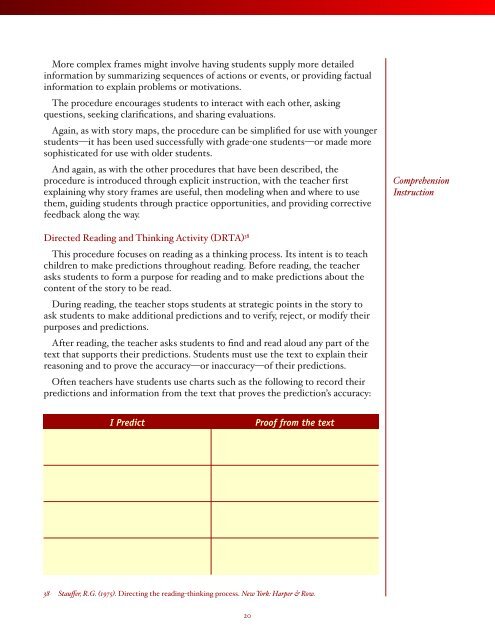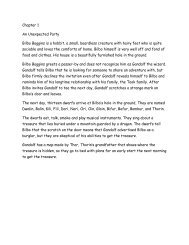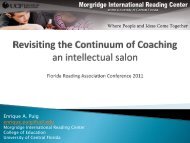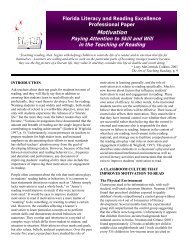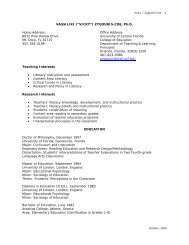compliance statement
compliance statement
compliance statement
You also want an ePaper? Increase the reach of your titles
YUMPU automatically turns print PDFs into web optimized ePapers that Google loves.
More complex frames might involve having students supply more detailed<br />
information by summarizing sequences of actions or events, or providing factual<br />
information to explain problems or motivations.<br />
The procedure encourages students to interact with each other, asking<br />
questions, seeking clarifications, and sharing evaluations.<br />
Again, as with story maps, the procedure can be simplified for use with younger<br />
students—it has been used successfully with grade-one students—or made more<br />
sophisticated for use with older students.<br />
And again, as with the other procedures that have been described, the<br />
procedure is introduced through explicit instruction, with the teacher first<br />
explaining why story frames are useful, then modeling when and where to use<br />
them, guiding students through practice opportunities, and providing corrective<br />
feedback along the way.<br />
Directed Reading and Thinking Activity (DRTA) 38<br />
This procedure focuses on reading as a thinking process. Its intent is to teach<br />
children to make predictions throughout reading. Before reading, the teacher<br />
asks students to form a purpose for reading and to make predictions about the<br />
content of the story to be read.<br />
During reading, the teacher stops students at strategic points in the story to<br />
ask students to make additional predictions and to verify, reject, or modify their<br />
purposes and predictions.<br />
After reading, the teacher asks students to find and read aloud any part of the<br />
text that supports their predictions. Students must use the text to explain their<br />
reasoning and to prove the accuracy—or inaccuracy—of their predictions.<br />
Often teachers have students use charts such as the following to record their<br />
predictions and information from the text that proves the prediction’s accuracy:<br />
I Predict Proof from the text<br />
38 Stauffer, R.G. (1975). Directing the reading-thinking process. New York: Harper & Row.<br />
20<br />
Comprehension<br />
Instruction


